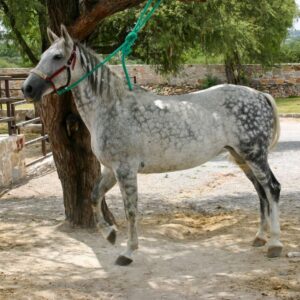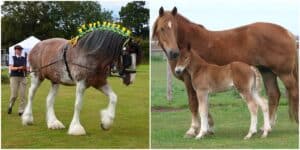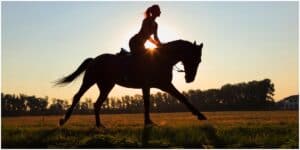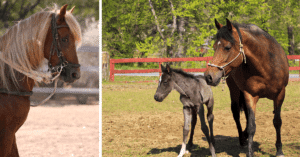Nunki, the last Abaco Barb horse died in 2015, officially putting the equines of the Bahamas' Great Abaco Island onto the extinct list. Now, The Wild Horses of Abaco Preservation Society is fighting to bring the animals back to life by cloning Nuki's preserved DNA. The Abaco Barb was a historically and genetically significant sub-breed of the threatened Colonial Spanish Horse. Their genome may hold information useful in preserving other breeds from issues like climate change.
Great news! A meeting with a most important Government Minister is scheduled for Thursday, July 22 at Noon. Please mark...
Posted by Wild Horses of Abaco on Tuesday, July 11, 2017
Like most wild equines, the Abaco Barb was short and sturdy, standing just 54 to 58 inches at the withers and weighing an average of 800 pounds. About half were blue-eyed “splash white” pintos, others were roans with mahogany or copper coats broken up by patches of ivory.
No one knows exactly how or when the horses were first brought to the Abaco Islands. One theory traces them back to the 19th-century logging companies who imported Cuban horses to haul lumber and later turned them loose. Another says they swam ashore from a 16th century shipwreck, and a third suggests that Loyalists fleeing the American Revolution brought the horses with them to the island.
Human interference and environmental changes beginning in the 1960s began to weaken the herd, eventually leading to its demise. Logging companies cut roads through the island's pine forests, giving hunters access to parts of the island they did not have before.
Around the same time a child was kicked and killed after trying to climb atop a wild horse, causing locals to begin killing Abaco Barbs indiscriminately. In the forties and fifties the number of horses was thought to be around 200. By the end of the sixties, they had been culled to just three.
Efforts to rebuild the population beginning in the 1970s temporarily improved the horses' numbers, but ultimately failed to make a significant difference. When Nunki died in 2015, the breed was officially extinct - but not necessarily for good.
Nunki's preserved cells have been sent to a Texas-based laboratory, where they have been cultured and stored, awaiting the go-ahead for cloning. No cloneable tissue remains from an Abaco stallion, so the plan would include two clones of Nunki bred with stallions possessing similar traits. This would preserve at least some of those rare genes.
The plan has been approved by the federal government, but the Wild Horses of Abaco Preservation Society faces obstacles including low funding and lack of support from the government of the Bahamas. Whether or not we will ever see another Abaco Barb horse remains to be seen.
Horse Courses by Elaine Heney
- Listening to the Horse - The Documentary by Elaine Heney & Grey Pony Films
- Shoulder In & Out Training for better balance, bend & topline development with your horse
- Over 110+ Polework Exercises & Challenges to Download
- Dancing at Liberty & Creating Connection with Your Horse (11 lessons) - Grey Pony Films
H/T to Atlas Obscura
Featured Image via Facebook/Wild Horses of Abaco





Leave a Reply